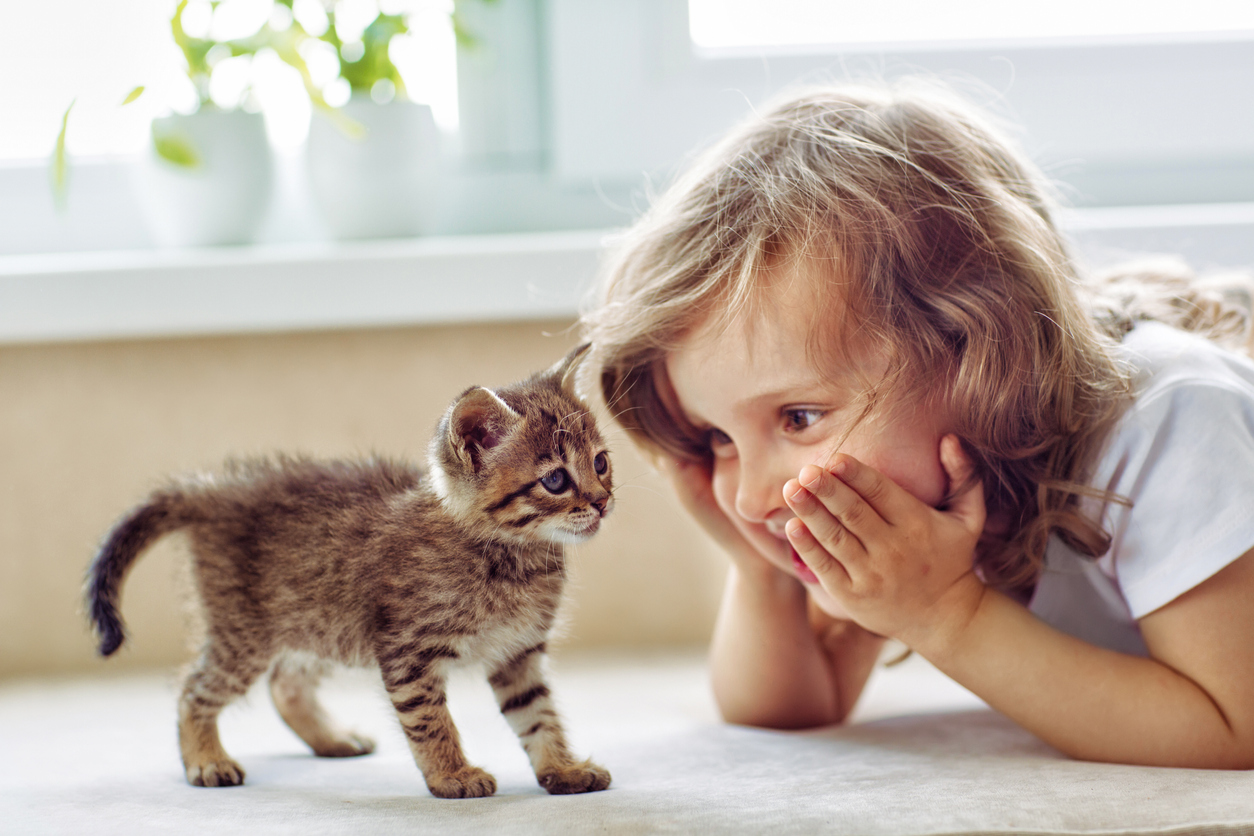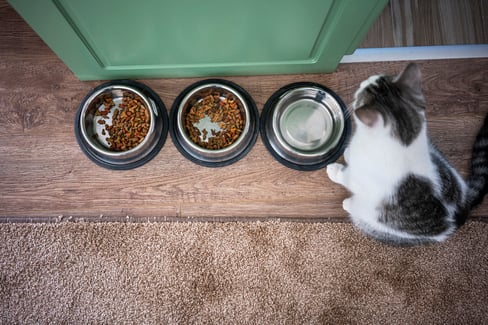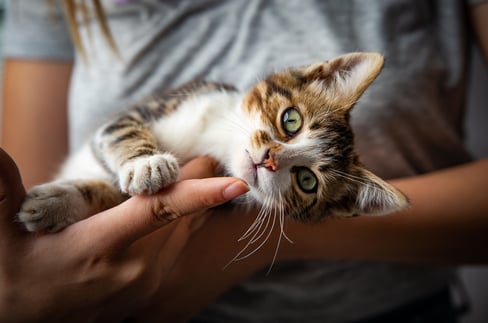Table of Contents
Newborn kittens are strong contenders for the cutest babies that the animal kingdom has to offer. With their tiny faces, big eyes, and baby-like mewing sounds, it’s not hard to fall completely and hopelessly in love with a kitten who has just entered the world.
If the newborn kittens you are taking care of have access to their mom—that’s awesome! In the cat world, moms are called Queens. The Queen will be able to provide the kittens with everything they need, including milk, cleaning, and toileting. During this time, the Queen will need to consume high-energy food, usually a kitten formula, to provide enough calories and nutrients to stimulate proper milk production to adequately feed her fast-growing kittens.
But if the kittens you’re caring for don’t have access to the mother cat for whatever reason, then these tasks will need to be taken care of by you! This means a dedicated schedule of round-the-clock care until the kittens are old enough to feed themselves and use the litter box on their own
Day-old kitten care requires dedication and consistency, especially in the first several weeks. While you’ll be rewarded with endless cuteness and opportunities to cuddle, the steps involved in how to care for a newborn kitten are far from easy.
This article explores how to care for a newborn kitten from birth to weaning, including considerations you should consider and product recommendations to help make raising a kitten easier.
Things to Consider Before Taking Care of a Newborn Kitten
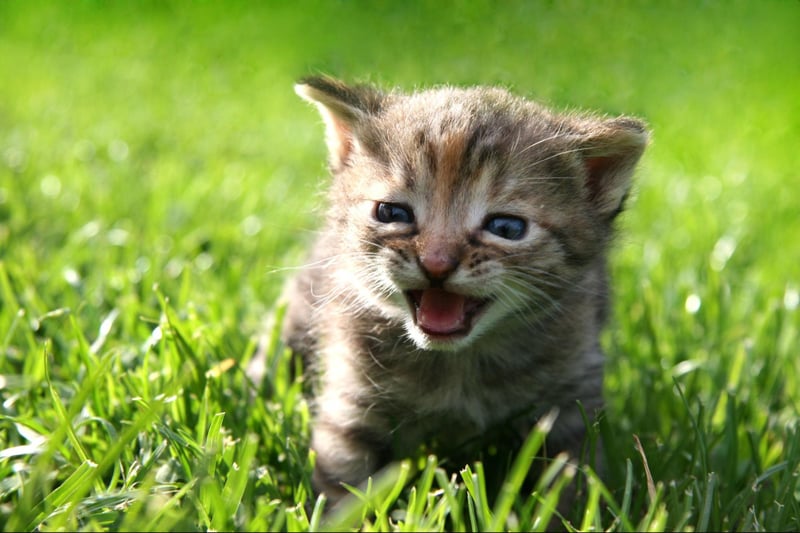
Being able to care for a baby kitten is a rewarding and fun experience, but it isn’t for the faint of heart. You must be prepared and committed to providing constant care and attention to the various little furballs under your care, especially if they don’t have access to a Queen.
Sometimes kittens come to us unexpectedly—but if you can plan ahead, you should! Here are some essential considerations to keep in mind for how to take care of a newborn kitten:
1. Environment Setup
It’s important to set up a cozy space for the Queen and her kittens (or just the kittens) away from children and pets so that they feel comfortable and safe. A spare room to dedicate to kittens is the best option, but in a pinch, a bathroom or closet can be used as well. Create a comfortable nesting space for the Queen in preparation for her giving birth consisting of a box, towels, and blankets. A fruit or drink box with raised sides works well to keep wriggly kittens in place. You can also use a new, clean, extra-large litter box without a cover. Whichever solution you create, make sure that there is enough space for the Queen to lie down and stretch out while her kittens nurse.
2. Kittens Require at Least 12 Weeks of Care
The commitment level involved in taking care of a newborn kitten is at least several months until they are ready to be adopted into new homes. During this time, you’ll need to either assist the Queen with taking care of her babies and making sure that she has the nutrition and support she needs or take care of every need of each kitten in the absence of the Queen.
Kittens require at least twelve weeks of care before they are weaned and ready for adoption. During this time, they are going through essential stages of development, similar to a human baby:
|
Kitten Growth Stage |
Development Milestone |
|
Birth to one week |
|
|
1–3 weeks |
|
|
3–5 weeks |
|
|
6–8 weeks |
|
|
9–12 weeks |
|
During the entire main kitten development process, the kittens' weight should be monitored daily. This helps ensure that the kittens are gaining a healthy amount of weight, which is usually aimed at 10–15 grams of kitten weight gain per day. Since kittens are so small, if they start losing weight or aren’t gaining enough weight, it could have significant impacts on their health and development. Daily monitoring makes it easy to identify problems so you can consult a vet immediately.
After kittens reach 12 weeks of age and are using the little box on their own and eating and drinking regularly without the help of their mother, they are ready for adoption.
3. Infant Kitten Care Requires Time and Money
Infant kitten care requires your time, attention, and financial commitment. If you’re taking care of a Queen and her kittens on your own, you can expect your budget for food, vet care, and other essentials like litter, toys, and various pet supplies to increase, so you should budget in advance to give yourself a buffer for these expenses if you can.
If you want to try your hand at caring for kittens for the first time and have the space to do so, most rescues in North America help volunteer fosters with some or all of the costs associated with baby kitten care, from food to veterinary bills, so if you’d like to volunteer to take care of a mother cat and her kittens for the experience, going through a rescue is the way to go. Rescues usually also provide as much additional support as possible through knowledge and advice to help you.
4. Cats Can Have as Many as 12 Kittens in One Litter
Oftentimes you’re not just taking care of one or two kittens per litter—you could be taking care of as many as twelve individual kittens! Sometimes the number of kittens that a Queen will have can be predicted in advance through ultrasounds and a careful eye, but sometimes extra kittens can present themselves unexpectedly during the birthing process. All in all, you likely won’t know exactly how many kittens the Queen will have until they are finished giving birth, so being prepared for multiple kittens with enough room, food, sources of warmth, and more is essential.
5. Kittens Can Go From Fine to Very Sick Quickly
It’s important to be emotionally prepared because not every kitten may make it to adulthood. Even if you do all the right things, including ensuring your kittens have the best veterinary care, a great space, and a well-fed Queen, the general kitten mortality rate can be as high as 29%. Orphaned and neglected kittens affect this number, but it’s still important to realize that sometimes you can do everything right and still end up with a tragic situation, so it’s important to be prepared to deal with that as you need to.
How To Care For A Newborn Kitten
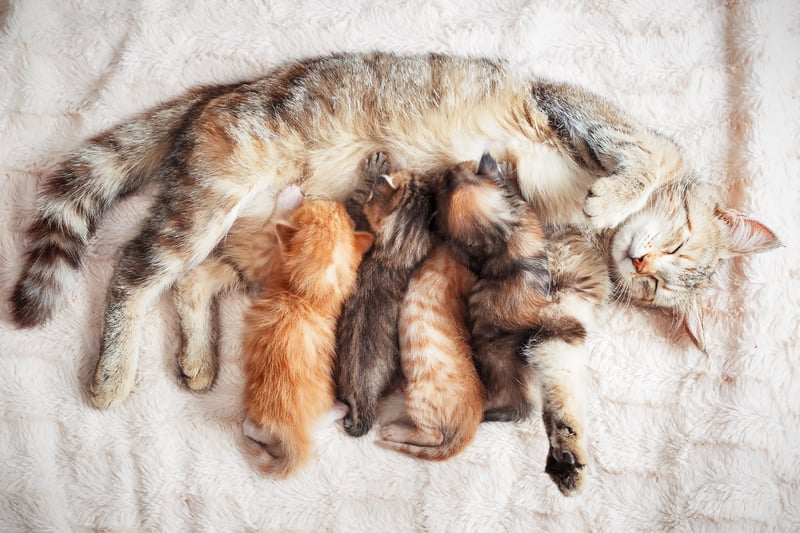
If you’ve gone through all the considerations you need to know before taking care of a kitten and are ready for the responsibility, then you’ll need to start coordinating a plan for all the things you’ll need for the next twelve weeks of care.
The basics of how to care for a newborn kitten include:
1. Daily and Nightly Care
Kittens will need to be fed and toileted throughout the day and night, which, although is doable for one person, is better served by at least two people switching on and off. Keeping a consistent schedule is important for healthy kittens, especially within the first few weeks of life when they are the most vulnerable, and this is much easier to stick to with two people. However, if you’re going at it alone, set alarms and reminders to help take the pressure off.
2. Clean and Safe Environment With Heat Source
Kittens cannot regulate their own body temperature effectively on their own until they reach about four weeks old. In the meantime, they rely on the Queen to keep them warm with her body heat and milk. If the kittens don’t have access to their mother or you want to give the mom a bit of a break, using a heating pad on a low setting or a microwavable heating pad covered by a soft blanket is a good substitute. Kittens that are less than four weeks old will generally not be able to wander too far from one area, so placing this heating element in the nesting area is a good idea.
3. Regular Feeding Schedule and Bathroom Stimulation
You must be prepared to feed a baby kitten day and night, which, if the Queen isn’t around, involves feedings every 2–4 hours using a special kitten milk formula. Never give your kitten cow or goat milk, as it will cause an upset stomach, including diarrhea, which can quickly become deadly for a tiny kitten.
Here is a handy chart that outlines how much formula to feed a kitten depending on their body weight and age:
|
Age |
Body Weight |
Total Formula Per Day |
Feedings Per Day |
|
1 Week |
4 oz (113 g) |
1.1 fl oz (33 ml) |
9 to 12 |
|
2 Weeks |
7 oz (198 g) |
1.9 fl oz (56 ml) |
7 to 9 |
|
3 Weeks |
10 oz (283 g) |
2.6 fl oz (77 ml) |
7 to 9 |
|
4 Weeks |
13 oz (368 g) |
3.5 fl oz (103.5 ml) |
5 to 7 |
|
5 Weeks |
15 oz (425 g) |
4.3 fl oz (127 ml) |
5 to 7 |
Remember that every kitten is different and will grow at different rates, so these feeding guidelines are just a general recommendation. Generally, a kitten should receive about 30 mls of formula every 24 hours for every 4 oz (113 g) of body weight. If you’re unsure of how much to feed a kitten based on their weight and age, consult your veterinarian for advice.
Stimulating a Kitten to Go to the Bathroom
After the kitten has been fed, they must be stimulated to go to the bathroom. Using a clean washcloth or disposable soft cloth (such as gauze) dampened with warm water (make sure it isn’t too hot!), gently rub the kitten’s abdomen and bottom. This simulates what the Queen would typically do to get their kitten to urinate and defecate. Using a light-coloured cloth is recommended so that you can clearly see if the kitten has toileted as they should. Usually, you’ll have to continue to stimulate them until they are done doing their business.
4. Vet Care (Deworming, Vaccinations, Etc.)
When kittens reach six to eight weeks old, they require their first round of routine vaccinations. These vaccinations are for common diseases such as:
- Rabies
- Feline Viral Rhinotracheitis, Calicivirus, and Panleukopenia (FVRCP), which is often combined into a single “distemper” shot
- Feline herpesvirus Type 1, Feline immunodeficiency virus, feline leukemia, bordetella, and chlamydophila felis
Kitten Vaccination Schedule
A typical kitten vaccination schedule is as follows:
First Visit (6–8 weeks)
- General overview of the kitten’s health, including nutrition and grooming
- Possible blood tests and fecal exams per the vet’s discretion
- Vaccinations for chlamydia, calicivirus, rhinotracheitis and panleukopenia
Second Visit (12 weeks)
- General examination
- First feline leukemia vaccine
- Second vaccinations for calicivirus, rhinotracheitis, and panleukopenia
Third visit (veterinarian will indicate when)
- Rabies vaccine
- Second feline leukemia vaccine
5. Socialization
Throughout a kitten’s development, they must be socialized properly to develop into happy, healthy, and confident cats. After a few weeks, it’s a good idea to start introducing the kittens to other people and pets (with slow, careful introductions). Kittens should also be given toys to help stimulate their minds and instincts. Any type of toy will do as long as it is a safe option for a kitten—avoid toys they could get stuck in or injure themselves on unless you’re supervising the playtime. Wand toys and catnip mice are great choices to help kittens practice their natural prey drive.
Essential Products For Baby Kitten Care
Taking care of a newborn kitten isn’t the easiest of tasks. Thankfully, there are a number of products that can make baby kitten care significantly easier and less stressful.
Here are a few of our top product recommendations that will help in the care of newborn kitten:
1. Drymate Savannah Grey Cat Litter Mat
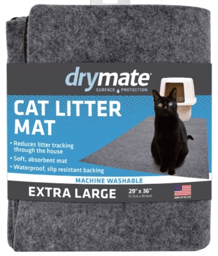
As your kittens grow and want to explore and play, they will inevitably do their business outside the nesting box—which can be an issue if you’re keeping them in a carpeted area. This little mat provides a great solution, as aside from being absorbent, it has a waterproof backing layer and can easily be cut to fit like a glove in a specific area without fraying, which is important to prevent little kittens from ingesting fibers. It’s also machine washable, so when the mat gets too dirty, you can throw it in the washing machine (hang it to dry afterward) and have it be as good as new! Be sure to thoroughly shake off litter and remove debris from the mat before washing.
$22.99 CAD. Pricing as of October 2023.
2. Catit Senses 2.0 Mini Flower Fountain
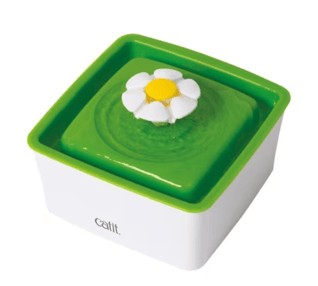
While your kittens may not be ready to drink independently for a few weeks, providing a cat fountain over a regular water bowl has many benefits, including catering to a cat’s natural instinct to drink running water. Cats have very sensitive noses and can be easily turned off of water sitting for days that has become stagnant and full of dust and food particles. A cat fountain like Catit’s mini flower fountain has a filter to remove small contaminants and keep water fresh. The mini size is perfect for tiny kittens to explore and drink from.
$29.99 CAD. Pricing as of October 2023.
3. Natural Balance Canned Cat Food - Indoor Formula
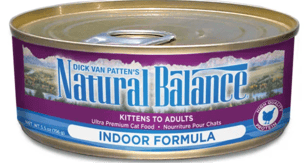
Kittens will start growing fast, and soon you’ll need to introduce wet food into their diet. At the same time, mom will need to eat food with additional calories to help her produce enough milk for her kittens. Natural Balance provides a complete formula that can be used for kittens and mom simultaneously—meaning you don’t have to buy separate food. Plus, natural balance ticks all the boxes regarding pet food nutritional guidelines for a “complete and balanced diet”, so you can be sure mom and kittens are getting the nutrients they need.
$2.39 CAD per can or $49.99 for a case of 24 cans. Pricing as of October 2023.
4. TRI-ACTA Joint Supplements
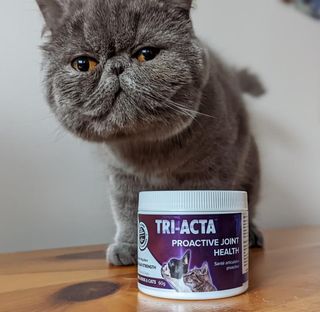
You might not be considering your kittens' joint health at this early stage, but giving your kitten a joint supplement as soon as they are fully weaned on solid food is a good choice for their overall health. As your kitten gets bigger quite quickly, their little body will mature and form into a permanent position.
As cats get older, like most animals, their joint health degrades—as many as 60–90% of cats will show signs of feline arthritis as they age. One of the most important ways that you can help your kitten grow up into a happy and healthy cat is by giving their body what it needs to help prevent these issues from happening later in life, and that can be accomplished through a cat supplement for joint health like TRI-ACTA.
What makes TRI-ACTA stand out from other solutions on the market is that it’s made with 100% natural ingredients—ones that are already produced in your kitten's body, including glucosamine for cats (joint lubrication and cartilage repair), Methylsulfonylmethane (MSM, a naturally occurring anti-inflammatory), and chondroitin sulfate (works alongside glucosamine for cartilage repair). By giving your kitten more of these essential ingredients, their joints get the support they need to stay healthy as they age. Because TRI-ACTA contains only natural ingredients that already occur in your kitten’s body, your kitten isn’t at risk of allergies or negative reactions to the supplement. And because there are no fillers in this product, the servings are very small and easy to administer. A serving is considered 1 gram and a young cat would only only require about ¼ to ½ a serving per day.
TRI-ACTA for Pets
A proactive approach for developing and younger adult pets to maintain optimal joint health mobility, minimize inflammation and fend off age-related ailments.
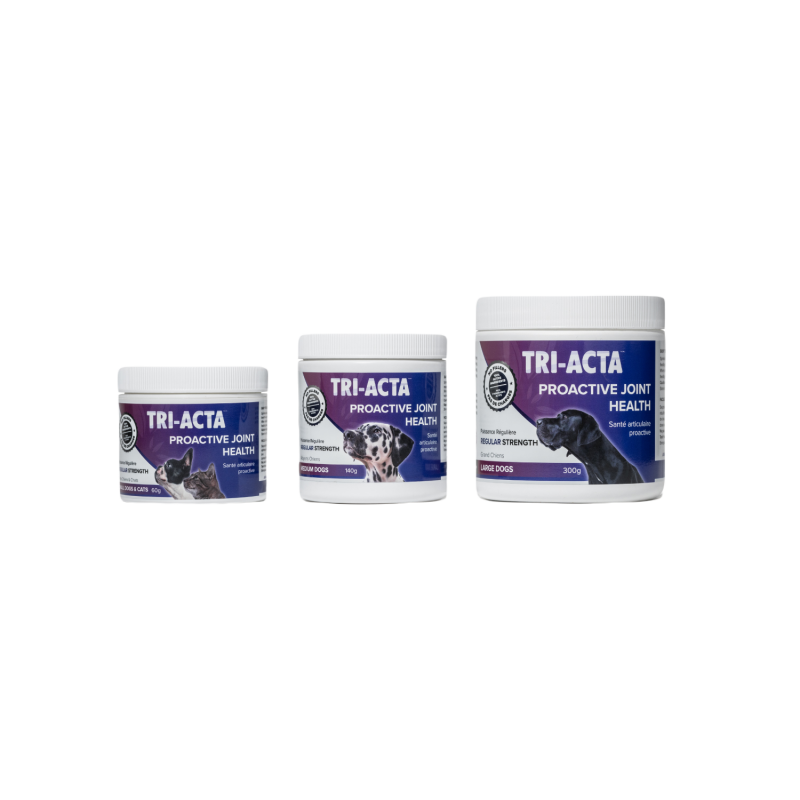
Starts at $23.99 CDN for a 60 g container. Pricing as of October 2023.
When Should I Start Litter Training a Kitten?
One of the essential parts of how to care for a newborn kitten is to watch their bathroom habits. Day old kitten care and beyond up until around three weeks of age requires regular stimulation of the kitten’s bottom and tummy to get them to go. But after that three-week period, the kitten will be ready to start being introduced to the litter box.
To get your kitten ready to use the litter box, be sure to provide:
- An open-top, shallow litter box that is easy for them to get in and out of.
- Litter that is kitten-safe, so free from dust, fragrances, and harsh chemicals. Pellet-based litter, such as pine, is often preferred because it is absorbent, natural, and dust-free.
- Easy access to the litter box. Avoid placing the box in a confined space that hides the litter box, as the kitten may be unable to see it. Instead, keep the litter box in the open and place it in a corner away from their nesting area.
In addition to providing a litter box, you might have to encourage the kittens to use it by placing them into the box after mealtimes, especially if they don’t have a mother to watch and learn from. Kittens have a natural drive to bury their waste, so with the right encouragement and conditions, they will use the litter box independently.
Conclusion
Taking care of a newborn kitten is a deeply rewarding yet demanding responsibility that requires dedication, time, and financial commitment. Whether you are assisting a Queen with her kittens or taking care of orphaned ones, the journey from birth to weaning is a crucial period involving constant care and attention. Considerations such as setting up a safe environment, understanding developmental milestones, ensuring regular feeding, providing veterinary care, and promoting socialization are vital to raising healthy and happy kittens.
To support your kittens’ joint health as they grow, consider adding TRI-ACTA to their daily diet. Made with 100% natural ingredients, TRI-ACTA is the perfect preventative joint supplement for kittens to full-grown cats.
Purchase TRI-ACTA online today or learn where to buy at a store near you.
Newsletter Signup
Subscribe to our newsletter to receive the latest news and exclusive offers.
.jpg?height=2000&name=Cliick_Integricare-DISPLAY-REVISEDV2%20(1).jpg)
Proactive & Therapeutic Joint Supplements
When given daily, Integricare joint supplements recover bone and joint injuries faster and help prevent mobility injuries from happening in the first place.

